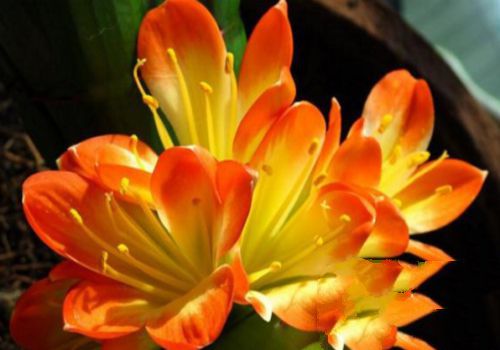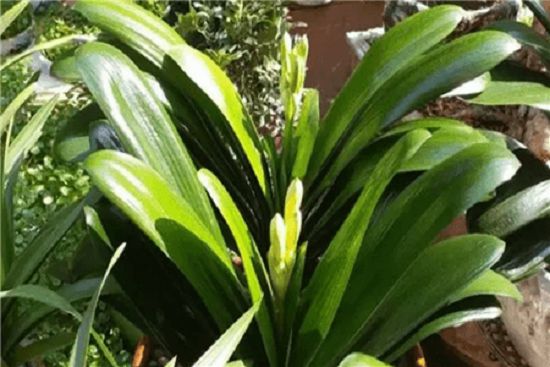The four seasons maintenance skills of Magnolia

First, gentleman orchid breeding in spring: pay attention to the wind.
In early spring, after hibernation, the roots of Cymbidium began to recover. Due to the lack of nutrient supply,-after the wind and the sun, the leaves will be dehydrated, resulting in a decrease in brightness, hardness, thickness, and even yellow leaves, rotten leaves and so on.
Therefore, more attention should be paid at this time: Cymbidium is drought-resistant and not resistant to moisture, and the pot plant can be kept generally moist, and it is easy to cause rotten roots if it is watered too much. Avoid spraying water before the arrow blossoms. Apply fully mature liquid fertilizer once a week or half a month, but according to the principle of "thin fertilizer", do not apply thick fertilizer or raw fertilizer to avoid leaf scorching and rotting roots.
2. Six major protections for the cultivation of orchids in summer
1. Prevent direct sunlight and do not expose yourself to the sun
The magnolia in summer should cover the strong light all day. Using the oblique light of the sun for a while every morning is enough to satisfy photosynthesis.
2. Prevent high temperature, do not dry
The summer temperature of gentleman orchid is 18 ℃-25 ℃, it is best to put it in an air-conditioned room, or in a balcony shaded and ventilated place. When watering, it is best to use tap water that has been insolated for two or three days, and water once after 6 o'clock every afternoon, do not make the basin soil too dry or too wet.
3. Prevent apprentices from growing, do not apply fertilizer
Summer is the dormant period of Magnolia, stop fertilization, moderate watering, humidity control is an effective measure. If the pot soil is overfertilized or the fertilizer effect is large, the soil in the upper part of the flowerpot should be poured out and mixed with the sand of 1, 3, 2, 2 and 3, which can not only reduce the fertilizer effect, but also play a cooling role.
4. Prevent dust pollution and do not pour dirty water
The leaves of Cymbidium should be kept clean, dipped in water with fine gauze every week, wrung out and gently dabbed once. Pouring dirty water will cause the roots and leaves to rot and turn yellow.
5. prevent soil consolidation and do not use clay (loess) into the basin.
Cymbidium is suitable for cultivation in humus soil with loose, breathable, water-permeable, fertile and PH value of about 7.0.
6. Prevent diseases and do not get infected
When changing soil or wiping leaves, the action should be light to prevent the root leaves from breaking and flowing out of juice, causing infection to cause ulceration.
Third, Magnolia culture in autumn: pay attention to rain, spray water.
In autumn, the climate gradually turns cool. in the days of continuous autumn rain, adult orchids have more opportunities to cut seeds and blossom on the arrow. at this time, if they are drenched or watered too much, it will lead to rotten roots, rotten arrows, rotten hearts and so on.
Therefore, in the arrow flowering, avoid spraying water, can be every half a month or so, irrigate a mature cake fat water (1:3). When watering, it is necessary to prevent the water from soaking into the center of the foliage, and Rain Water should not be allowed to drench into the foliage to avoid rotten stamens. In serious cases, it may even cause the whole plant to rot to death.
Fourth, Cymbidium culture in winter: pay attention to low temperature and dryness.
In winter, when the orchid is at a low temperature below 5 ℃, the basin soil must be kept at a humidity of about 70%, so that it will not be frostbitten by dryness. If the moisture is less than 20%, it is easy to freeze to death.
Before Frosts Descent, the room plant should be placed in a sunny place indoors, pay attention to anti-freezing and keep warm, the pot plant can be rotated 180 degrees in half a month or so to facilitate the neat and beautiful growth of leaves.
It is safe to survive the winter when the indoor temperature is kept at 6-7 ℃ in winter. Fermented cake fertilizer can be applied once a month, liquid fertilizer should be irrigated once every 10 days, and nitrogen fertilizer should not be applied more. Three months before flowering, the application of liquid fertilizer is mainly phosphorus and potassium fertilizer, which can promote its arrows to blossom.
Related
- Is the orchid suitable for indoor use? Is it good for the body?
- How to prevent the empty root of orchids?
- What to do after the crab claw orchid is withered?
- Why are the leaves of orchids always yellow? Fertilizing and watering.
- Can the root of the gentleman orchid be saved if it is rotten?
- Diagnosis and treatment of cotton-blowing beetle insects in Cymbidium
- There is a way for a gentleman's orchid to rot.
- What is the most suitable temperature and humidity for the orchid?
- How to raise a gentleman's orchid? Cultivation techniques of Cymbidium
- How to prepare the nutritive soil for the cultivation of Cymbidium



